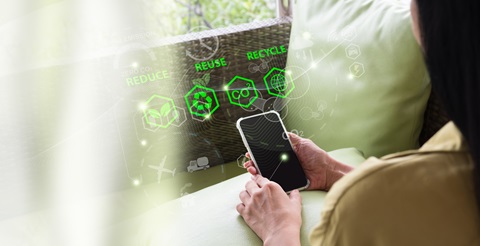The future of luxury retail is hybrid
In this op-ed, Assoc Prof Julien Cayla discusses how luxury stores are becoming more experiential, and how after a late start, brands have only just started to embrace digital channels.
Luxury stores are still designed as intimidating cathedrals of consumption. Heavy doors, glass cases and service in white gloves: these props and tricks create daunting, almost sacred spaces.
A major challenge for luxury brands is that luxury consumers are changing fast; they have diversified. Younger customers are accustomed to the convenience of digital platforms. Consumers from newer fast-growing markets like China are also disrupting the traditions and rituals of luxury.
Given these changes, one would expect luxury retailers to radically overhaul luxury retail, and some changes have already taken place. Luxury stores are becoming more experiential. After a late start, luxury brands have started to embrace digital channels. But luxury brands are still playing catch-up in trying to adapt to a globally diverse, fast-changing clientele.
Because luxury brands are so secretive, studies rarely give any glimpse of what really goes on in the world of bespoke products and services. Through collaboration with a major luxury conglomerate, we were given unique access to luxury retail spaces, luxury clients and luxury managers, helping us develop novel insights on this topic.
We took an ethnographic approach, observing customers as they would visit luxury boutiques in some key markets (United States, France, Japan, and China). Our fieldwork involved 41 days of participant observation in a total of 18 stores, with an average of approximately 2 days of observation per store.
In addition, we conducted interviews with 79 customers, recruited from a database of clients that the luxury company provided. Finally, we conducted 12 semi-structured interviews with managers working in the luxury industry, in Paris, Hong Kong, and Singapore.
Based on our research, in which we talked to more than 100 luxury customers and retailers in key luxury markets, we argue that the future of luxury retail will be all about hybridity. Only through a hybrid retail strategy will luxury retailers be able to adapt to a rapidly changing luxury market.
We suggest three main ways to adopt a hybrid retail strategy.
Spatial hybridisation
Spatial hybridisation refers to using retail spaces to cater to a diverse clientele visiting stores. Some luxury brands are already doing this. For example, Van Cleef & Arpels created a "bridal bar". Clients can sit on high stools, sip a glass of champagne, and choose from a menu of rings.
Van Cleef manages to blend hedonism, which is all about sensory experiences, with distinction, which is all about status and tradition. Similarly, Louis Vuitton has created stores that look like new-age museums. The stores mix playful, multi-sensory features, while keeping the elegance and glamour of the brand. Hermes developed pastry corners inside its stores in Dubaï.
Luxury retailers can also use a retail portfolio strategy to embrace hybridity. The Parisian department store Galeries Lafayette has a new outlet named the "Shopping & Welcome Centre". Located opposite its flagship store on Boulevard Haussmann, the new store targets tourists. The store offers streamlined duty-free procedures and a large number of luxury brands within a limited space.
The store saves travelers a lot of time. It also keeps tourists away from more traditional stores, where some customers go for a more traditional luxury experience. Not everybody values the ritualised experience of luxury stores, but these rituals are important in keeping the mystique of luxury brands.
Technological hybridisation
Technology is key in creating a more hybrid and modular experience for luxury consumers. Think, for instance, of wealthy and regular luxury customers. They are frequent buyers, but they may see little value in the time-consuming experience that luxury stores entail. Or think of customers who may see luxury brands as an investment. In China, one of the luxury retailers we met told us about removing VIP rooms. Instead, his boutiques are now designed to deliver his brand in a more efficient way.
This does not mean that technology should only be used to save customers' time. Technology can also create new forms of distinction. In Shenzhen, the Burberry brand has invested in new ways to create status online. Customers accumulate virtual currency through their online purchases. They can then unlock exclusive in-store experiences, such as reservations at the store's restaurant. Technology is key here in blending efficiency online and distinction within the store.
Interactional hybridisation
Two out of three Chinese luxury consumers complain about indifferent luxury salespeople. This is problematic, given the importance of salespeople in the sector. Fancy ads and carefully designed stores may draw customers in, but in the end luxury salespeople are instrumental in closing the deals. We see luxury salespeople as key in helping luxury brands adapt to the diversity of their clientele.
To deliver more positive interactions, managers need to move beyond brand-centric sales training. Up till now, luxury companies have used their brand as a guiding force for their global expansion. These investments have paid off and attracted hordes of new customers, especially in Asia.
But this single-minded focus on branding may have gone too far. A powerful luxury brand can even become a negative. Recent research shows that luxury salespeople can become too absorbed by the particular brand -- so focused on the brand that they have a hard time adapting to and accepting clients' tastes. Luxury sales training thus needs to change and help create a new set of skills, for luxury salespeople to become more agile, less focused on the brand, and more focused on customers.
The writer, Assoc Prof Julien Cayla, is an associate professor at the Division of Marketing of Nanyang Business School, at Nanyang Technological University.
Source: The Business Times


.tmb-listing.jpg?Culture=en&sfvrsn=41c3e350_1)
.tmb-listing.png?Culture=en&sfvrsn=d48abb4_1)



